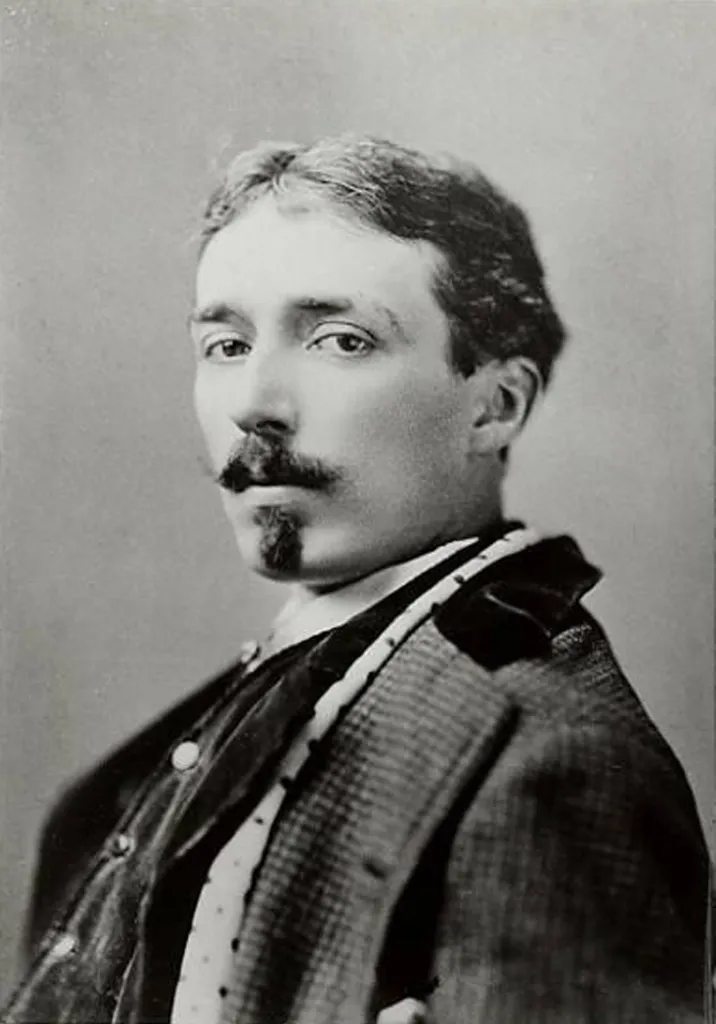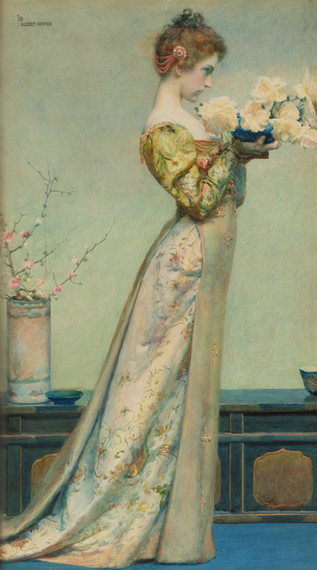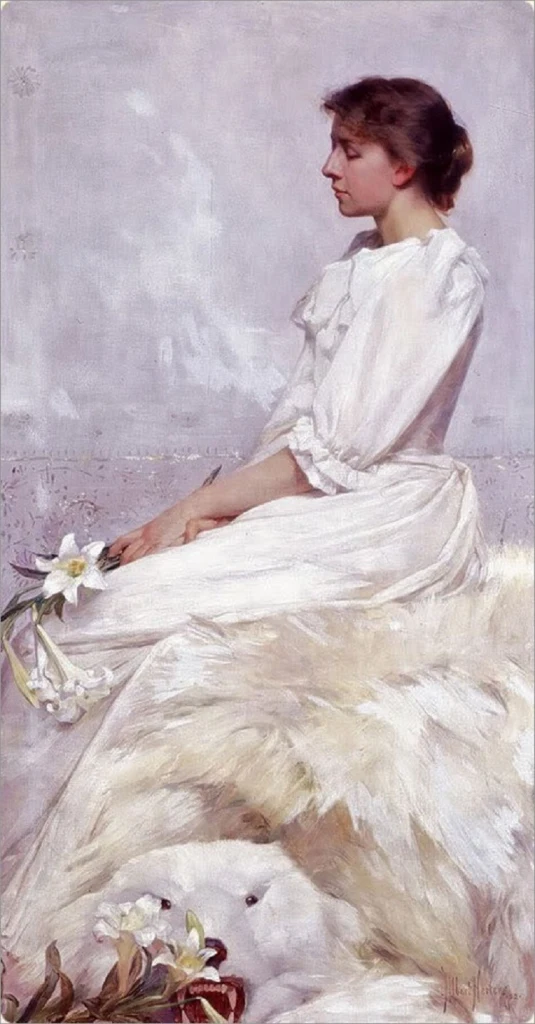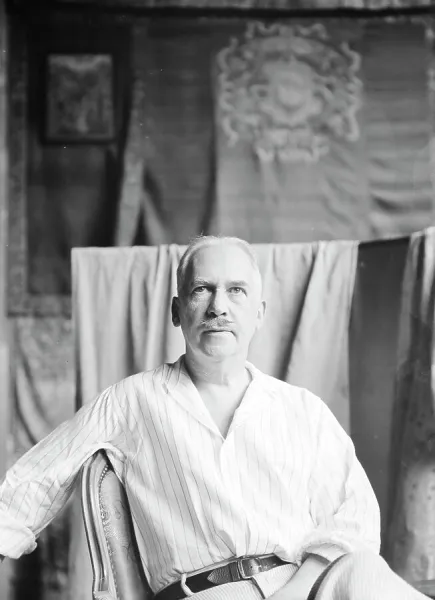Albert Herter - Gifted Gallery
- Lilium

- Jul 2
- 4 min read

Albert Herter, born 2 March 1871, was an American painter, illustrator, muralist, and interior designer.
Albert Herter was born in New York City. He came from an artistic family; his father, Christian Herter, had co-founded Herter Brothers, a prominent New York interior design and furnishings firm. Herter Brothers closed in 1906, and Albert founded Herter Looms in 1909, a tapestry and textile design-and-manufacturing firm that was, in a sense, successor to his father's firm. He studied at the Art Students League with James Carroll Beckwith, then in Paris with Jean-Paul Laurens and Fernand Cormon.
Herter had an extraordinary early career, at age 19 receiving an honourable mention at the Paris Salon (1890, La Femme de Buddha), and winning prizes from the Pennsylvania Academy of the Fine Arts (Lippincott Prize, Le Soir), the American Watercolour Society (Evans Prize, The Gift of Roses), and elsewhere. He was awarded medals at the 1895 Atlanta Exposition (The Muse), the 1897 Nashville Exposition (The Muse), the 1900 Paris Exposition Universelle (Sorrow), and the 1901 Pan-American Exposition in Buffalo (Gloria, The Danaides).
In Paris, he met a fellow American art student, Adele McGinnis. Adele Herter was a founding member of New York City's Cosmopolitan Club, and is best remembered as a painter of still lifes and "society" portraits. They were married in 1893 and honeymooned in Japan, then returned to Paris for the first years of their marriage. They had three children: Everit Albert, Christian Archibald, and Lydia Adele. In 1898 they moved back to the United States and built a Mediterranean-style villa, called "Près Choisis" (later called "The Creeks"), in East Hampton, New York, with a studio for each of them.
In 1909, Herter was commissioned by the Daughters of the American Revolution to create what was intended to be the world's largest painted theatre curtain, for the Denver Auditorium. The flat curtain was 35 feet (11 m) high and 60 feet (18 m) wide. Its theme was an allegory of the United States Declaration of Independence, and included illustrations of historical figures such as George Washington, Thomas Jefferson, and Benjamin Franklin. Herter executed murals for buildings such as the Massachusetts Statehouse, the Wisconsin State Capitol, the Los Angeles Public Library, and the National Academy of Sciences.

Herter's mother built a mansion, "El Mirasol," in Santa Barbara, California, where the family spent the winters. Following his mother's death, Herter and his wife renovated the mansion and converted it into a boutique hotel. Their son Everit and daughter Lydia also became artists. Their second son Christian became a politician, serving as governor of Massachusetts and later U.S. Secretary of State under Dwight D. Eisenhower.
The Herters' elder son, Everit, volunteered to fight in World War I, and was killed in June 1918. Herter channeled his grief into this mural, which depicts soldiers leaving for war from that same railroad station. The young man at centre with his arms in the air is a portrait of Everit, the woman in white at far left is a portrait of his wife Adele Herter, and the man at far right with the bouquet of flowers is a self-portrait. Herter later donated the mural to the People of France in 1926. His best-known work, Le Départ des poilus, août 1914 (Departure of the Infantrymen, August 1914), is a mural in the Gare de Paris-Est railroad station in Paris.

In 1912 Herter had painted a life-size double portrait of his sons, Everit (left) and Christian (right), which his friend V. Everit Macy donated to the Metropolitan Museum of Art. Following Everit Herter's 1918 death in World War I, the Metropolitan returned Portrait of College Boys to the artist, and Macy donated Herter's Portrait of a Young Russian Nobleman in exchange. Herter painted covers for the Ladies' Home Journal and other magazines, and illustrated a number of books. He also created several World War I posters.

Herter designed Spanish Colonial Revival interiors for the Loews Warfield Theatre (1923) in San Francisco, including a mural of Spanish-style dancers above the proscenium. He designed Byzantine Revival interiors for Broadway's Martin Beck Theatre (1924) in New York City, which was renamed the Al Hirschfeld Theatre in 2003.

Herter wrote and produced a play called The Gift of Eternal Life, An Indo-Persian Legend. It was performed at the Lobero Theatre in Santa Barbara, March 20–23, 1929. He designed the sets and costumes, and played the part of the King. It was produced through the Drama Branch of the Community Arts Music Association of Santa Barbara. In the playbill, he acknowledged the writings of Lily Adams Beck for inspiring the Orientalist theme and "much of its imagery," and said that he also used several lines written by Rabindranath Tagore and Ananda Coomaraswamy. The cast was made up primarily of locals, although Herter's friend, dancer Ruth St. Denis, played the lead.
Albert Herter died 2 February 1950, aged 78. Adele had died four years earlier in 1946. Herter had been elected an associate member of the National Academy of Design in 1906, and became a full Academician in 1943. He was a member of the Society of American Artists, the American Watercolour Society, the New York Water Color Club, the Society of Mural Painters, and the Century Club. He was made a Chevalier of the French Legion of Honor in 1923.


























































































































Comments